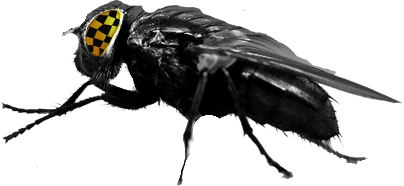European Wasps in Australia 31 Mar 2015
7 ways to deal with European wasps this autumn
Sara Phillips ABC Environment 30 Mar 2015
European wasps encroach on Canberra
European wasp nest numbers are increasing across Australia. Credit: Supplied: European Wasp Hotline
THEY'RE STRIPY yellow and black but they're not the friendly garden pollinators you want in your backyard. European wasps are in plague numbers in Australia this year and the question on everyone's lips is how to deal with the blighters.
European wasps (Vespula germanica) are not native. They slipped into Australia in the 1970s, quickly spreading across the nation. They are a social insect, building nests with one queen, a handful of reproductive males and an army of female foragers.
Unfortunately they also sting. According to a Victorian government health website, the sting is painful and remains that way for several hours but unless you are allergic to the venom, the pain and swelling will eventually subside. However unlike a bee, a wasp can sting more than once and victims of multiple stings should seek medical advice.
So how can Australians enjoy the last warm days of the year outdoors without being harassed by squadrons of wasps?
1) Don't attract them
"Wasps look for protein in the form of meat and they look for sugars — for carbohydrates," says Professor Andrew Austin, a wasp biologist at the University of Adelaide.
One way to keep them out of your yard is to pick up fallen fruit and keep pet food indoors. They also like water and compost heaps. Austin also recommends not drinking soft drink directly from the can. "If a wasp crawls into a soft drink can and then someone has a swig of the can they can get stung in the mouth and the throat."
However if these suggestions are impractical, take heart, they are short-lived insects. Wasp nests build up numbers from spring, reaching their maximum in autumn. As the weather cools off, they start to die out and should be all gone over winter.
2) Ignore them
"When you see wasps flying around the place, if you ignore them they don't usually cause any problem," says Professor Austin.
He says that unless provoked, they'll usually stay focussed on their task of finding food for the nest. It's only when they feel threatened that they attack and call in other members of the nest to join the attack.
3) Shoo them
If you're feeling brave, a gentle ushering away of the wasp from your food shouldn't be enough to upset it. But Austin urges caution in the art of the gentle shoo.
"If you grab and hold it, it will sting you, but if you flick it away it'll shake its head and get back up and start flying around again." And he warns that they are very persistent so shooing won't work for long.
4) Water trap
One technique that can kill off a few is a water trap. A dish filled with sugary water and a dash of dishwashing detergent is attractive to wasps. The detergent breaks the surface tension of the water, so when the wasp lands on it, it sinks to the bottom and drowns.
The trouble with this trap is that beneficial bees would also be attracted to the dish and would meet a similar watery end.
5) PET bottle trap
Another suggestion is the PET bottle trap. A old soft drink bottle (with lid) needs to have some 8mm holes drilled about 100mm from the bottom, and then filled with a source of food — a little bit of cat food mixed with water should do the trick. Mix it into a paste and allow some to spill out of the holes so it evaporates and starts those wasp antennae twitching. Hang the trap from a tree with some string.
6) Flea treatment
Argentinean researchers found wasps were killed by fipronil, the active ingredient in some pet flea treatments. They dosed up a portion of minced beef with 0.1 per cent fipronil and laid it out for the wasps. Numbers crashed by nearly 90 per cent in the poisoned area. While the researchers declared success, they also cautioned that they did not yet know the affect of the flea treatment on other species — including birds — in the area.
7) Destroy the nest
Wasps don't travel very far from home to find food. Professor Austin suggests they may only fly as little as 100m from the nest. Once they've found food, they grab it and make a beeline back home with it. So it may be possible to discover their lair and become the hero of the neighbourhood.
"If you find a nest you can report it to the local council and they'll arrange for its destruction. And if you do that, it often solves the problem in the immediate area," says Professor Austin.
Their nest can be a burrow, or a ball of greyish papery material. They can also build nests inside walls or roofs of houses, entering through only a narrow passage. But be warned, wasps are very defensive of their home. Keep your distance.
More research
Andrew Austin says it's unclear why there are so many wasps this year but he suspects weather may have something to do with it. This year was a mild summer with no scorching days that might have reduced the wasps' numbers.
He says that more research on the wasps would help to answer such questions but because they are not a significant agricultural pest, the funds have not been found.
"Most of the government agencies are focussed on doing research on agricultural pests which can cause huge amount of economic damage and so it's worthwhile spending the money. With urban pests like these, there's no group to fund the research."
He adds that the intermittent nature of wasp plagues doesn't help. "Incidental things like this that come and go several years apart are actually really difficult things to come to grips with both in terms of funding and who takes responsibility for them," he says.
Jason Wood, the federal member for the Victorian seat of La Trobe recently called for new funding for research into European wasps. He says several colleagues support his proposal to return some of the money previously cut from the CSIRO to fund wasp research.


